Discover 20 hidden attractions, cool sights, and unusual things to do in Petersburg (United States). Don't miss out on these must-see attractions: Siege Museum, City Market, and Blandford Church. Also, be sure to include Pamplin Historical Park in your itinerary.
Below, you can find the list of the most amazing places you should visit in Petersburg (Virginia).
Table of Contents
Siege Museum

Commercial building. The Exchange Building, also known as the Merchant's Exchange Building or The Exchange, is a historic commercial building in at 15-19 West Bank Street in Petersburg, Virginia. Built in 1841, this Greek Revival style building is one of the least-altered examples of a 19th-century market hall. It now houses the Siege Museum commemorating the Siege of Petersburg. It was declared a National Historic Landmark in 1971.[1]
Address: 15 W Bank St, 23803-3213 Petersburg
City Market
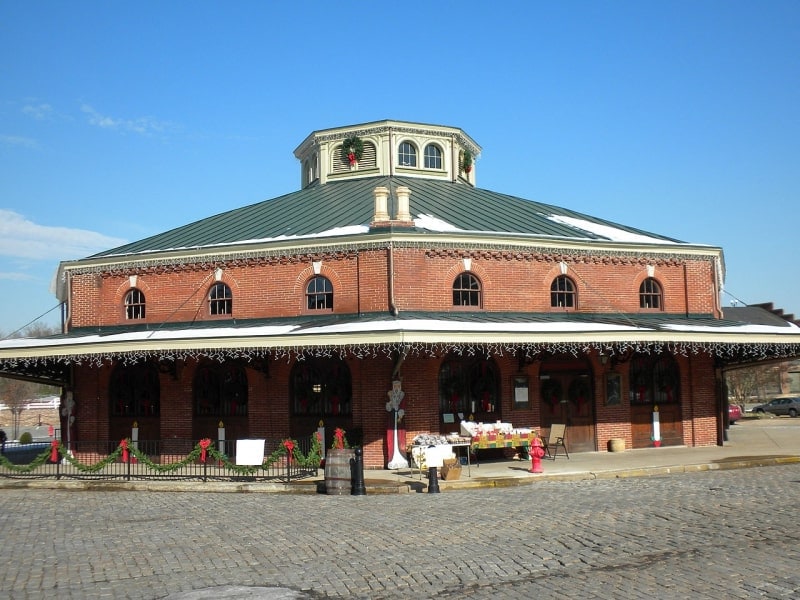
Market in Petersburg, Virginia. City Market, also known as Farmers Market, is an historic public market located at 9 East Old Street in Petersburg, Virginia. It was built in 1878–1879 through a land given in trust by merchant Robert Balling. The City Market is an octagonal brick building. It measures 93 feet in diameter and is surrounded by a large metal canopy supported on elaborate iron brackets. The market’s high-rafted interior was originally where perishables were sold, whereas the outside stalls were for produce.
It was added to the National Register of Historic Places in 1969. It is located in the Petersburg Old Town Historic District.[2]
Blandford Church

Building. The Blandford Church is the oldest building in Petersburg, Virginia whose history is well documented. It is at the highest point in the city, atop Well's Hill. It is today part of a memorial to Southern soldiers who died during the Civil War. It is adjacent to Blandford Cemetery, one of the oldest, largest and historically significant cemeteries in Virginia. The Blandford Cemetery did not exist until after the church building had been abandoned, in the early 1800s, and the land purchased by the city to use as a cemetery.
The Blandford Church, also known as St. Paul's Church or simply "The Brick Church", was erected in 1736 on Well's Hill, the highest point in Petersburg. In 1781, during the American Revolution, the Battle of Blandford, also known as the Battle of Petersburg, was fought nearby. Following the battle Major General William Phillips was ordered back to Petersburg to meet Lord Cornwallis who was moving north From Wilmington, North Carolina. While in Petersburg awaiting the arrival of Cornwallis, Phillips fell ill and died on 13 May 1781. He was secretly buried somewhere in the churchyard.
The church building was abandoned in 1806 after the construction of another Episcopal church in Petersburg when the Town of Blandford in Prince George County was absorbed by Petersburg. It became "an ivy-clad picturesque shell."
During the Civil War the church served as a major telegraph station. It was used as a field hospital, most notably after the Battle of the Crater on July 30, 1864.
Necessary repairs for its preservation were made by the City of Petersburg in 1882. A Ladies' Memorial Association of Petersburg was founded in 1866 and took on preserving the former church as a memorial to the large number of Confederate soldiers buried in the adjacent cemetery. (Some 30,000 were buried unidentified in mass graves.) It is one of the oldest non-religious women's organizations in the country. Between 1889 and 1905, the Ladies Memorial Association paid for a pulpit and 34 pews. The windows were restored temporarilily with clear glass.
The Ladies Memorial Association requested from the eleven Confederate states, plus the slave states of Maryland and Missouri, funds to commission stained-glass windows. (Only Kentucky declined.) Between 1904 and 1912, windows were created and installed by Louis Comfort Tiffany. Each of the large windows contains the image of a Saint, and symbols associated with that Saint. In addition to the thirteen state windows, Tiffany donated one, as did the Ladies Memorial Association.
The stained glass half-round window over the church door contains the name Ladies Memorial Association of Petersburgh, VA, the dates 1866–1909, and in the center, the only Confederate flag Tiffany is known to have made, together with the dates 1861—1865. As the city's Web site puts it, it is a shrine to its 'Lost Cause.'"[3]
Address: 111 Rochelle Lane, 23803 Petersburg
Pamplin Historical Park
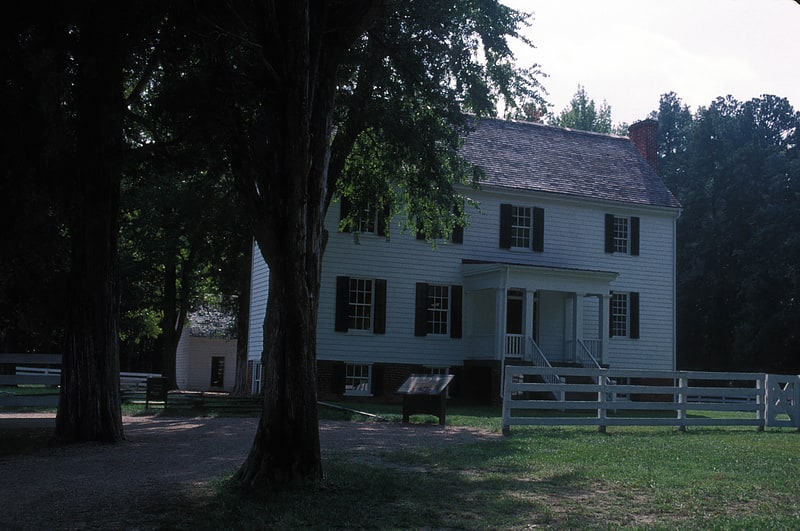
Museum in Dinwiddie County, Virginia. Pamplin Historical Park is a 424-acre private sector historical park located near Petersburg, Virginia. The park preserves open space near Richmond, Virginia in Dinwiddie County, Virginia and serves the dual use of preserving a significant fragment of the Petersburg Breakthrough Battlefield, a National Historic Landmark, and key components of the Third Battle of Petersburg. The park also provides a footprint location for the National Museum of the Civil War Soldier, which is located within the park.
The Pamplin Historical Park cooperates with owners of adjacent parcels of Third Battle of Petersburg property, the Petersburg National Battlefield and the American Battlefield Trust, in preserving much (not all) of the physical space on which the battle was fought and interpreting it for the general public. In particular, a decisive segment of the battle, the Boydton Plank Road breakthrough by the 5th Vermont Infantry and other units, occurred on Pamplin Park property at dawn on April 2, 1865.
The park includes several pre-Civil War structures that are interpreted to 1864-1865 and presented as an integral part of the park landscape, including Tudor Hall Plantation (c. 1812). 3 miles (4.8 km) of park trails include close-up looks at the Confederate trenches that were the target of the climactic Federal assault. The park bears the name of its founder, businessman and Civil War enthusiast Robert B. Pamplin, Jr.
A. Wilson Greene helped develop Pamplin Historical Park and served as its executive director from 1994 to 2017. It is a Virginia Historic Landmark, was designated a U.S. National Historic Landmark, and is listed on the National Register of Historic Places.[4]
Address: 6125 Boydton Plank Rd, 23803 North Dinwiddie
Blandford Cemetery
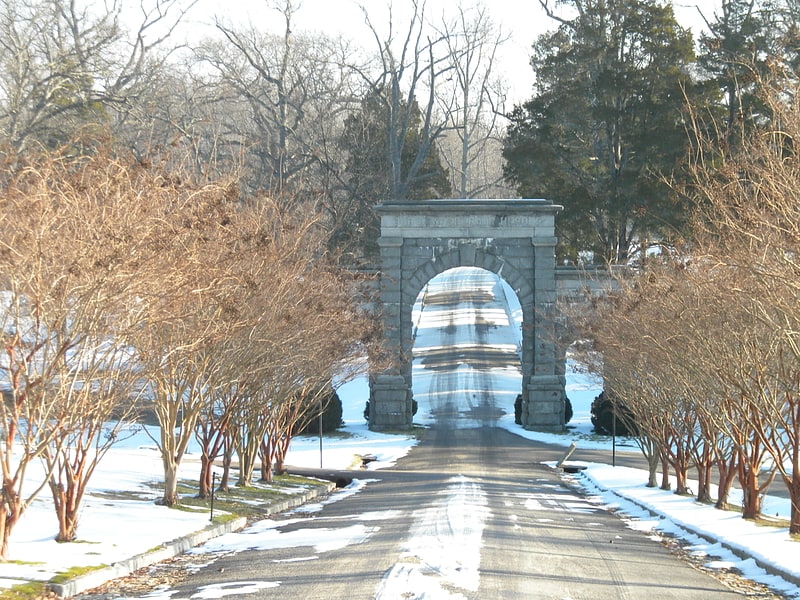
Cemetery. Blandford Cemetery is a historic cemetery located in Petersburg, Virginia. The oldest stone, marking the grave of Richard Yarbrough, reads 1702. It is located adjacent to the People's Memorial Cemetery, a historic African-American cemetery.
Although veterans of every American war are buried there, the largest is a mass grave of 30,000 Confederates killed in the Siege of Petersburg (1864–65) during the American Civil War. Only 3,700 names of the interred are known.
Over the entrance road is a stone arch labeled "Our Confederate Heroes", with the dates 1861–1865 and 1866–1913.
In 1866, Blandford Cemetery was the site of one of the earliest Decoration Day ceremonies. While visiting the cemetery, the wife of Union General John A. Logan was present and reportedly witnessed Miss Nora Fontaine Davidson, a schoolteacher, and her pupils putting flowers and tiny Confederate flags on the soldiers' graves. Shortly afterward General Logan issued a proclamation to the Grand Army of the Republic (a very large Union veterans association) calling for the observance of Memorial Day. Locals say that Decoration Day served as the inspiration for the federal Memorial Day.
In 2014, Bellware and Gardiner dismissed this claim in The Genesis of the Memorial Day Holiday in America, pointing out that General Logan was aware of the southern observances of Memorial Day prior to his wife's trip to Virginia in 1868, and had mentioned them in a speech in 1866.
The cemetery grounds cover 189 acres (0.76 km2), making it the second largest cemetery in Virginia (Arlington National Cemetery being the largest). The original burial grounds, referred to as the "old ground," span 4 acres (16,000 m2) and includes the historic Blandford Church.
Colonel Robert Bolling, Confederate Major General William Mahone, his wife Otelia, and many of their kinfolk, Confederate Brigadier General Cullen A. Battle and Confederate Brigadier General David A. Weisiger are interred there.
The cemetery is adjacent to Blandford Church, which is a Confederate memorial that features a full set of windows designed by Tiffany studios.
The cemetery was listed on the National Register of Historic Places in 1992.[5]
Address: 319 S Crater Rd, Petersburg
Petersburg Courthouse Historic District
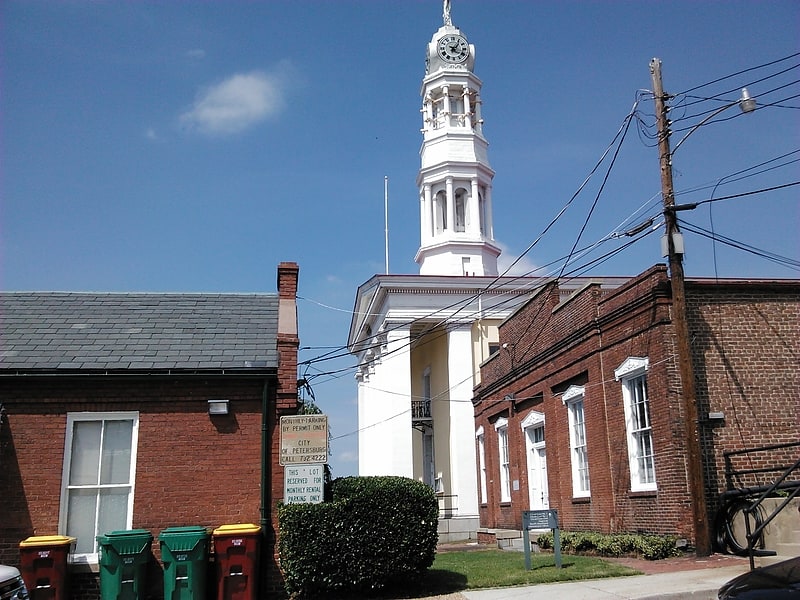
Historical place in Petersburg, Virginia. Petersburg Courthouse Historic District is a national historic district located at Petersburg, Virginia. The district includes 75 contributing buildings located in the central business district of Petersburg. It is centered on the Petersburg Courthouse and includes notable examples of Greek Revival, Italianate, Federal style architecture. Notable buildings include the Paul-Lassiter House, Slaughter-Tatum House, Tabb Street Presbyterian Church Rectory, Mark E. Holt Jewelry Store, Augustus Wright Block, Virginia National Bank, Saal's Department Store, Remmie Arnold Pens Company building, A&P Super Market, Watson Court Apartments, and the Zimmer & Company Building. Located in the district and separately listed are the Petersburg City Hall, Tabb Street Presbyterian Church, and Saint Paul's Church.
It was listed on the National Register of Historic Places in 1990.[6]
Centre Hill Museum
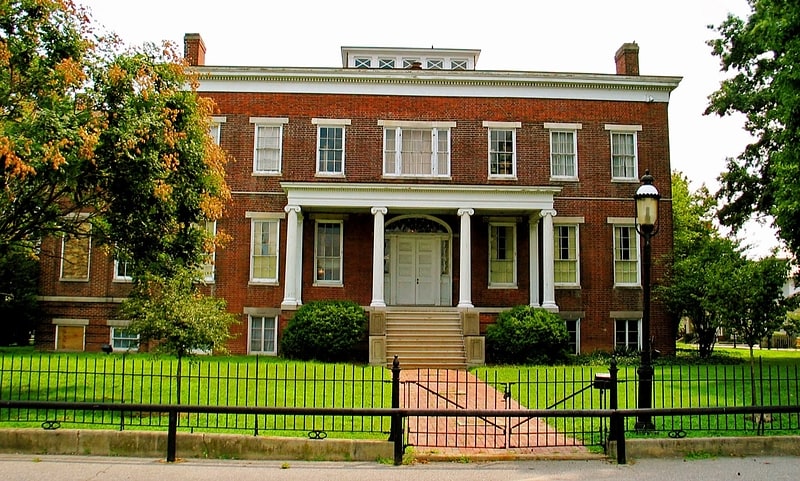
Centre Hill Museum or Centre Hill Mansion as its proper name, completed initial construction in 1823 and was built by Revolutionary War veteran Robert Bolling IV. The Bollings were a very prominent family for many generations, being granted a plot of land in present-day Petersburg by the then King of England. Centre Hill served as Union headquarters during the reconstruction period; therefore, a meeting between a Union general and President Lincoln took place inside the home in 1865. President Taft also spent time on the property. Its doors were opened as a museum in the 1950s.[7]
Farmers' Bank
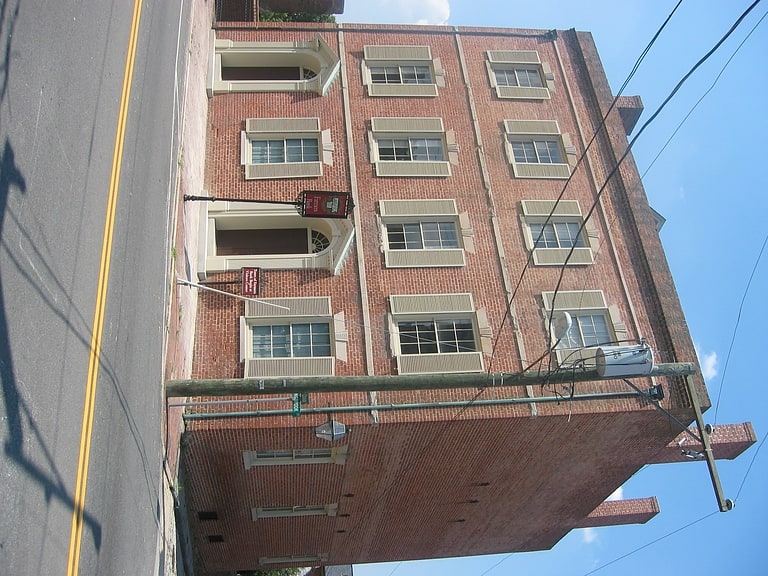
Museum in Petersburg, Virginia. Farmers' Bank is the first bank museum of its kind found in Virginia. Farmers' Bank was incorporated in 1812 and the Petersburg, Virginia branch opened in 1817.[8]
Address: 19 Bollingbrook St, 23803-4548 Petersburg
Petersburg National Battlefield

National park in Petersburg, Virginia. Petersburg National Battlefield is a National Park Service unit preserving sites related to the American Civil War Siege of Petersburg. The Battlefield is centered on the city of Petersburg, Virginia, and also includes outlying components in Hopewell, Prince George County, and Dinwiddie County. Over 140,000 people visit the park annually.[9]
Poplar Grove National Cemetery
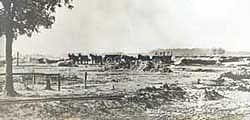
Cemetery. Poplar Grove National Cemetery is near Petersburg, Virginia, and is managed as part of Petersburg National Battlefield.[10]
Address: 8005 Vaughan Rd, 23805-9785 Petersburg
Gillfield Baptist Church

Nonprofit organization. Gillfield Baptist Church is the second-oldest black Baptist congregation in Petersburg, Virginia and one of the oldest in the nation. It has the oldest handwritten record book of any black church. It was organized in 1797 as a separate, integrated congregation. In 1818 it built its first church at its current lot on Perry Street.
In 1957 its ninth pastor the Rev. Wyatt Tee Walker (1953–1959), co-founded the Southern Christian Leadership Conference, led the congregation in the Civil Rights Movement in Petersburg. It continues to serve the community today.[11]
Petersburg City Hall
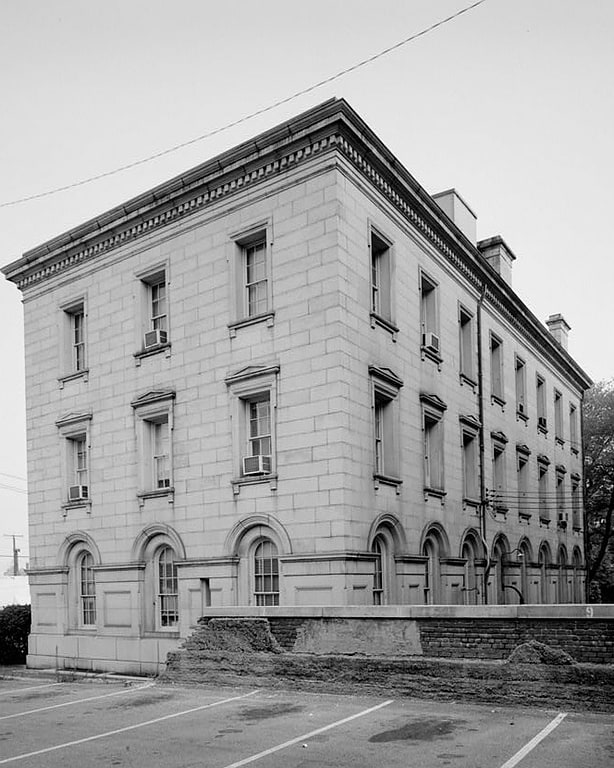
Building in Petersburg, Virginia. Petersburg City Hall is a historic city hall building located at Petersburg, Virginia. It was designed by architect Ammi B. Young and built between 1856 and 1859, as the U.S. Customs House and Post Office.[12]
Address: 135 N Union St, Petersburg
Petersburg Old Town Historic District
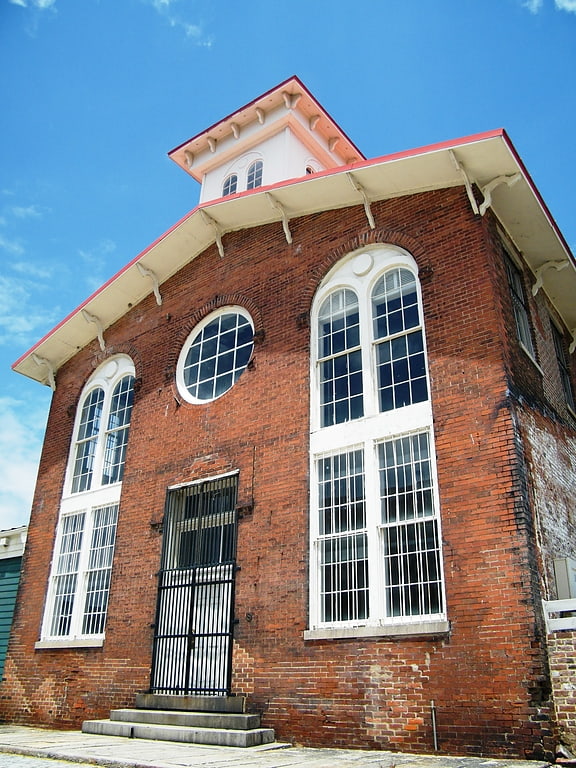
Petersburg Old Town Historic District is a national historic district located at Petersburg, Virginia. The district includes 174 contributing buildings located in the oldest section of Petersburg. It includes a varied collection of late 18th- through 20th-century architecture. Notable buildings include the Strachan-Harrison house, the John F. May house, South Side Railroad Depot, High Street United Methodist Church, Church of Christ, and the Powell Manufacturing Co. Located in the district and separately listed are the Appomattox Iron Works, City Market, Exchange Building, Farmers' Bank and Nathaniel Friend House.
It was listed on the National Register of Historic Places in 1980, with a boundary increase in 2008.[13]
Folly Castle Historic District
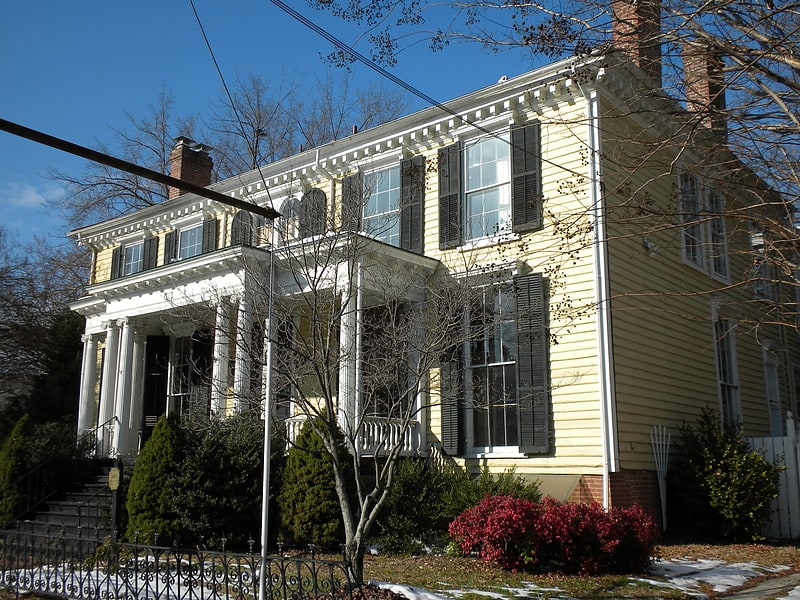
Park in Petersburg, Virginia. Folly Castle Historic District, also known as the West Washington Street Historic District, is a national historic district located at Petersburg, Virginia. The district includes 189 contributing buildings and 1 contributing object located in a predominantly residential section of Petersburg. It includes a varied collection of late 18th-and 19th-century houses and includes notable examples of Late Victorian, Georgian, Italianate, Queen Anne, and Federal style architecture. Notable buildings include Folly Castle / Peter Jones V residence, McIlwaine-Friend residence, Rambout-Donnan residence, former Petersburg High School, Donnan House, First Baptist Church, Couch House, and St. John's Episcopal Church. Located in the district and separately listed are the Second Presbyterian Church and Strawberry Hill.
It was listed on the National Register of Historic Places in 1980, with boundary increases in 1992 and 2000.[14]
Address: 323 W Washington St, Petersburg
Pocahontas Island
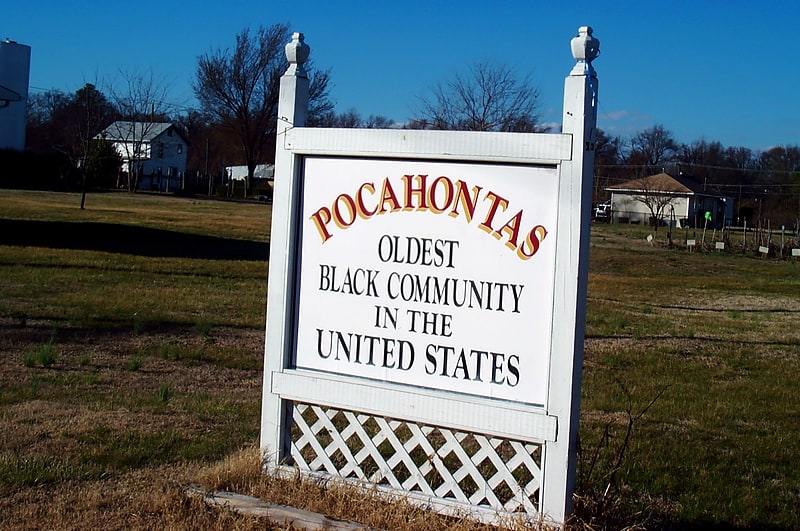
Pocahontas Island is a peninsula in Petersburg, Virginia once on the opposite side of the Appomattox River from Petersburg. Since 1915 a new channel for the river separated it from Chesterfield County and the former channel no longer separates it from the city. Once a warehouse and wharf-filled urban landscape initially platted in 1749, the island was devastated by a 1993 tornado before citizen involvement caused creation of the Pocahontas Island Historic District, which in 2006 achieved listing on the National Register of Historic Places as a historic district because of its significance in African-American history and for its prehistoric indigenous archeological assets.
Archeologists found evidence of prehistoric Native American settlement dating from 6500 B.C. The indigenous Appomattoc people inhabited this region and encountered European colonists by the early 18th century, when the first enslaved Africans were brought to work here.
In the 19th century, Pocohontas Island became a notable freedom colony. the first predominately free black settlement in the state and, by mid-19th century, one of the largest in the nation (although enslaved people also lived on the island, and some free blacks owned slaves). In 1860 slightly more than half of Petersburg's population was black, and 3,224 or one-third of those people were free; they constituted the largest free black population of the time. During the 20th century, the island's population declined as people moved north in the Great Migration. In 1975 residents secured renewed residential zoning to protect their neighborhoods from industrial development proposed by the city.[15]
Address: 224 Witten St, 23803-3356 Petersburg
Tabb Street Presbyterian Church
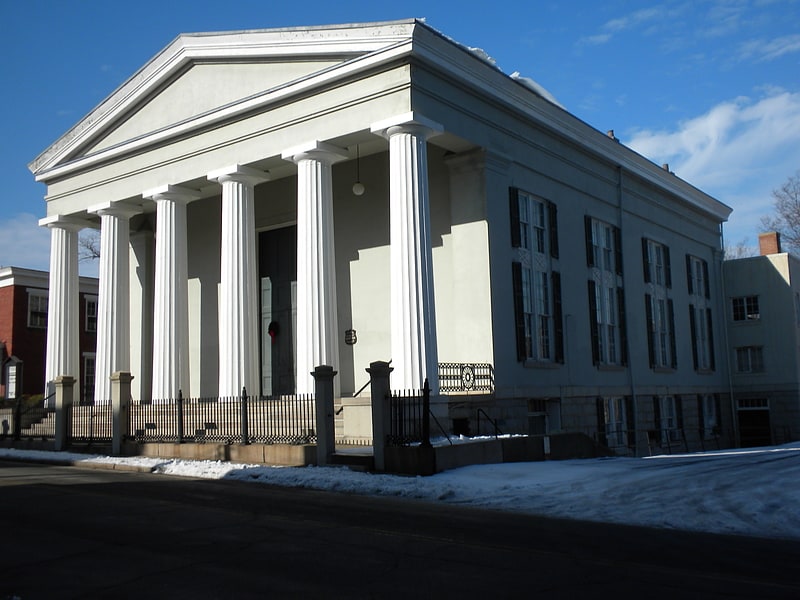
Church in Petersburg, Virginia. Tabb Street Presbyterian Church is a historic Presbyterian church located at Petersburg, Virginia. It was designed by architect Thomas Ustick Walter and built in 1843, in the Greek Revival style. It has stucco covered brick walls and features a massive Greek Doric order pedimented peristyle portico consisting of six fluted columns and full entablature. It has two full stories and a gallery. A three-story rear brick wing was added in 1944.
It was listed on the National Register of Historic Places in 1979. It is located in the Petersburg Courthouse Historic District.[16]
Second Presbyterian Church
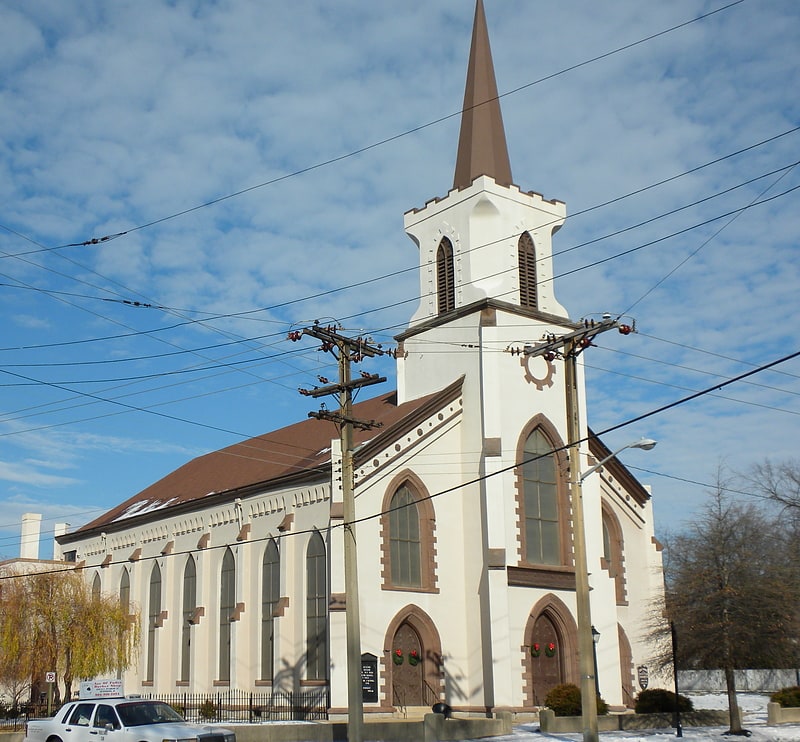
Place of worship in Petersburg, Virginia. Second Presbyterian Church is a historic Presbyterian church located at 419 W. Washington St. Petersburg, Virginia. It was designed by architect and church pastor Theodorick Pryor and was built in 1861–1862, in the Gothic Revival style. It has stucco covered brick walls and a tower that protrudes from the central bay of its three-bay entry facade. The interior features iron ornamentation, cast by a foundry in Petersburg at the beginning of the American Civil War.
It was listed on the National Register of Historic Places in 1991. It is located in the Folly Castle Historic District.[17]
Washington Street Methodist Church
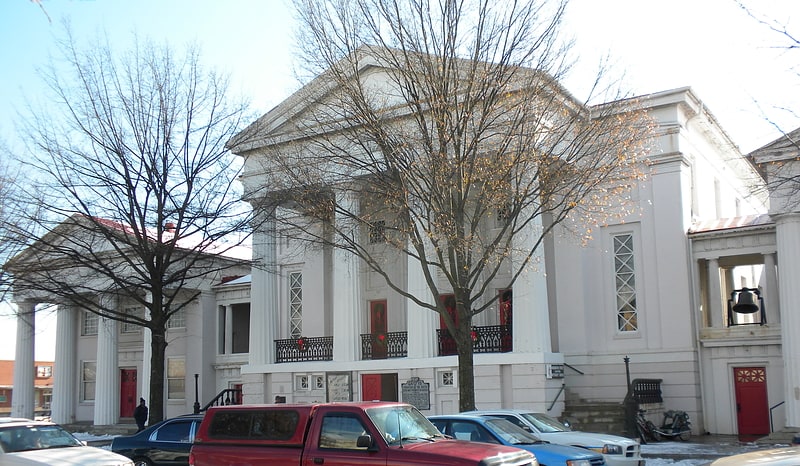
Church. Washington Street Methodist Church is a historic Methodist church located at Petersburg, Virginia. It was built in 1842, and is a one-story with gallery, brick building in the Greek Revival style. It features a massive Greek Doric order pedimented tetrastyle portico added in 1890. Wings were added in 1922–1923, connected to the main building by columned hyphens.
It was listed on the National Register of Historic Places in 1980.[18]
Centre Hill Historic District
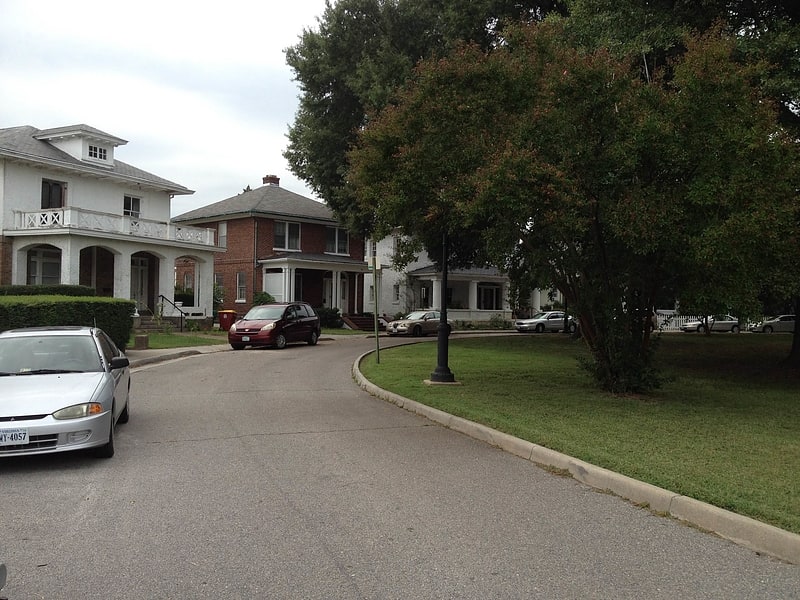
Historical place in Petersburg, Virginia. Centre Hill Historic District is a national historic district located at Petersburg, Virginia. The district includes 81 contributing buildings located in a predominantly residential section of Petersburg. It includes a varied collection of early-19th-century to early-20th century houses and includes notable examples of Greek Revival, Italianate, Colonial Revival, and Bungalow style architecture. Notable buildings include the Centre Hill Apartment Building, Eichberg House, Powell House, Unger House, and St. Joseph's Convent. Located in the district and separately listed is the Centre Hill Museum.
It was listed on the National Register of Historic Places in 1986.[19]
Lee Memorial Park
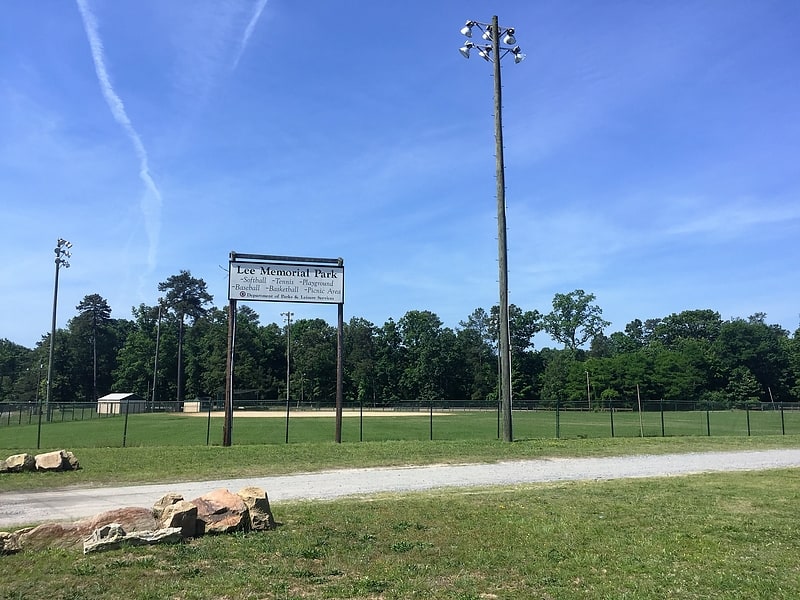
Park in Petersburg, Virginia. Lee Memorial Park is a historic park and national historic district located at Petersburg, Virginia. The district includes two contributing buildings, three contributing sites, and two contributing structures. They are the park superintendent's house, the bathhouse, Willcox Lake reservoir, the Civil War earthworks, the park's system of roadways, paths and trails, the park's general topography and the Lee Park Wild Flower and Bird Sanctuary created by the Works Progress Administration between 1935 and 1940. As part of the W.P.A. project, Petersburg artist Bessie Niemeyer Marshall painted 238 watercolors of Lee Park herbarium specimens.
It was listed on the National Register of Historic Places in 2000.[20]
Address: DEFENSE Rd, Petersburg